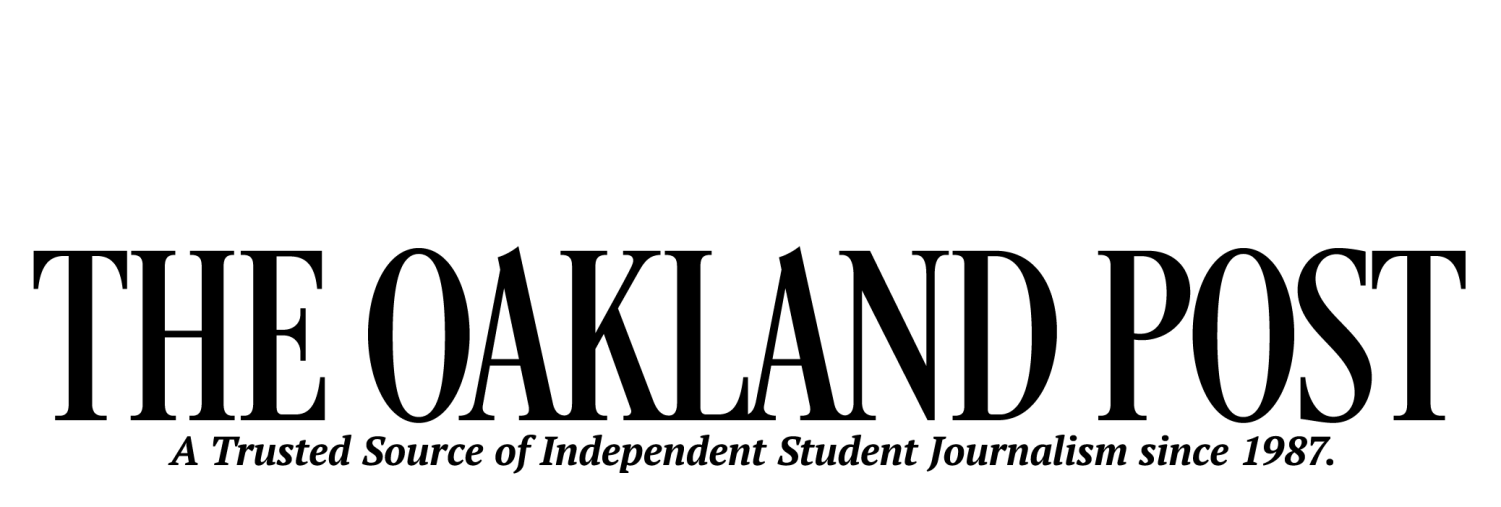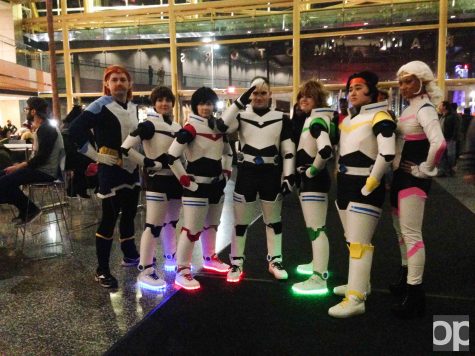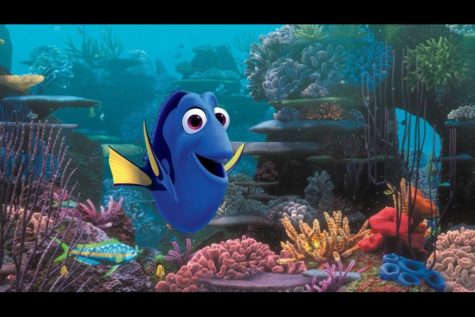Q&A: “Alice Through the Looking Glass” director talks about the wonder of Wonderland
Alice in Wonderland was an enormous success back in 2010 when it grossed over a billion dollars at the worldwide box office. Six years later, Disney is going back to Wonderland with Alice Through the Looking Glass, out May 27. Director James Bobin talked to college journalists from around the country about the challenges of adapting a classic story, what a typical day on set was, and working with Johnny Depp.
Question: Will this movie go back and cover story elements from THROUGH THE LOOKING GLASS that were left out along with the additional storyline created solely for the story or will it be just a continuation of the first movie with the script, completely original storyline?
James Bobin: Yeah, good question. Well, the book is obviously very important, particularly important to me, because growing up in England, read this book 100 times. So I know it pretty well, but also that meant that I knew going into this, that the book’s story is rather unusual. The book story is really an analogy with a chess match, whereby Alice becomes the queen to makes moves to write chapters. And this is where it’s a very strange sequence of events. And it’s beautiful and great. But doesn’t really work as a driving narrative, to sit down to watch for an hour and a half. So I was really quite keen to kind of combine elements in the book the things I thought were important in the book. Like things of the backwards room, which held the Looking Glass itself. But at the same time use the characters from Tim’s movie, try and tell a story which feels in terms of the spirit of Lewis Carroll and the Carollian extent of language in terms of grammar, et cetera. But an original story. So we tried to keep, use elements of the book in terms of locations, and some of the dialogue, but really the story is an original story. A new story that Linda Woolverton wrote, and it kind of serves as both the prequel and a sequel, her first movie in a way.
Question: What’s a typical day on the job as a director and specifically for post-production editing days?
James Bobin: Well, normally – and certainly by the time you get on the set, really you should have a great idea as to what you’re doing that day. I mean, for me, I’m always been a stickler for planning. And then some of it there you really have to know way ahead of time what you’re doing that day and how it’s gonna work. And even some blocking and shots. That is worked out in advance. So basically it’s more of a physical endurance to actually shoot itself, until it’s just making your day. So you tend to, you get up incredibly early, like at 4:30 or so.
And you get to set ahead – shooting starts normally 7 or so, depends on what you’re doing. If you’re outside it could be murder, like 5. If you’re on stage, you want to try and be human. And obviously [LAUGHS] start around 7 o’clock or so. So I’m up in there at 6:30 or so. And then it’s really a question of what you’re doing that day. Sometimes it’s pretty intense stuff with actors in terms of being, particularly when it’s some more emotional scene where I talk to the actors about the scene itself, prior. I’m not a huge believer in rehearsal. I mean, I do it occasionally. But I just feel on the day, I like a spontaneity performance.
And also comedy background tends to need rehearsal, kind of often lose the juice in the rehearsal. But try keep that going. And so then you just basically move from, you know, push through the day. And when you tend to know what you’re doing, often blocked it out in your head. And often you end up working it out with the actors on stage what they’re doing and often of course they have their ideas, and you impart ideas onto them. And it’s new, and you work it out how the scene’s gonna play. And then you shoot. I mean, obviously, in terms of shooting time, often these days we could have no lunch. Whereby you’ll shoot 10 hours. Sometimes we’ll shoot six hour blocks.
Four or five hour blocks. But then at day end, sort of sevenish, eightish, but obviously it being filmmaking, things can go awry. And you know, things can push on. And you know, people often say that’s part of my job is looking at my watch. Which is true. And so it’s a thing that’s just having it there, making it as you can and then getting it right. And then of course the great responsibility of the director’s calling it when he’s got it. And that’s one of the great choices you make in your life. But then keep on filming until 8 or 9, and then you finish the day.
You wrap up and you kind of go over what’s gonna happen tomorrow. Often you go back and you watch dailies made before. Depending on how tired you are. And then you tend to finish around 10 or 11. So you can imagine, shooting is pretty demanding. And you better be ready to do it, because it’s a heck of a lot of your time and energy.
Question: So you’ve taken on such iconic characters in your direction experience, from the MUPPETS to ALICE IN WONDERLAND. How do you deal with the pressures of adapting such classic stories while still putting your own original touch on them?
James Bobin: I mean, really for me, lot of it is, filmmaking is so subjective because about your own personal opinion to a degree, and I feel both with MUPPETS and ALICE, you have a very clear idea of what they mean to me. And then my implementation of the work and it arises from that. So I have a sense of what I think they are. Like with THE MUPPETS I remember them very clearly from my childhood. I remembered why I liked them. And so I wanted to try and make them feel like that again. And that was kind of a thing with them. So you are aware of the responsibility because obviously I’m not the only person who loves these characters, everyone loves these characters. So, all you can do is, at that point of the situation, is time to treat your own sense of what they are.
And how they behave and what they mean in the space to occupy in the world about that. And so it’s a responsibility but at the same time, with MUPPETS particularly it felt like they hadn’t been around for a while. And so I kind of try and reintroduce them. You know, to people, in a way. And my kids who were growing up for the time, didn’t know they were. And that felt like a very bad thing. Alice is in a different version, been around forever. And it’s incredible for making a movie, which is, you know, what, 150 years old. And it’s a great testament to Lewis Carroll, his incredible imagination in this world.
And so again, it’s that thing where you have a responsibility and I want to be true to Lewis Carroll but at the same time I want to make a film whereby you are transported to an incredible place in an hour and a half you know, in that part of the part of the story where Lewis Carroll thinks, with more experience, in mathematics and structure. And I’m more interested in narrative and storytelling. But I guess that’s kind of like time, it should introduce that work and be true to it, at the same time, making it relevant is my job.
Question: How different is it doing family films such as The Muppets and its sequel and now Alice Through the Looking Glass, compared to your adult oriented TV work like Flight of the Concords, Enlightenment and D-Ali G Show?
James Bobin: You know what, I mean, really it’s not that – it’s really not that different. It’s funny, I mean, I always think that CONCORDS even though it does have references which makes it slightly [inappropriate] as sometimes it gets – at heart the thing which, the everybody, one of the great things of CONCORDS, is to know what speaks to guys. And that there are people of all ages there. And so I think CONCORD and MUPPETS was not that different, it felt like very similar territory, I thought in a way, it’s kind of where my humor, well humor’s a very broad church.
Everyone has different sense, you know, of humor and it encapsulates all sorts of forms of humor. I was just trying to make things look a number of levels, that’s what I think is consistent across my humor, so I like things that work for numbers of ways of – and can be appreciated by different people for different reasons. That’s what I liked about, you know, both – and therefore also I guess to a degree about Borat, I mean Borat was a character whereby he’s funny because he’s crazy. And that’s the terrible. But at the same time he’s helping understand the breakdown of post Soviet Eastern Europe. He’s interesting in that type sense where you can appreciate that on number of levels. And I always wanted to make MUPPETS like that too, whereby I could watch with my five-year-old daughter, at the time she’d laugh and I would laugh. For lots of different reasons.
And then I guess with ALICE it’s that same idea whereby Lewis Carroll is a genius and a mathematical, incredible guy. And he was asked in a very interesting way which meant that you could tell it as a story for children, but if you liked language and if you like, you know, the entomology you’d like that in Lewis Carroll. And so it’s the idea that the, all of these various strands of my sense of humor all have this sense that work on a number of levels. I guess that’s the thing when you have them all together.
Question: Did you feel obligated to follow the style set forth by Tim Burton, much less, one of the strongest elements of the first film, or did Disney and Burton being a producer on the film kinda allow you to handle the sequel in your own manner, in your own way. And kinda find your own visual rhythms within the film.
James Bobin: Yeah. All of the – it’s both, really, again Tim’s visual products, they’re strong and so beautiful. But they just looked incredible. And I love that world looking from the character’s side, I think that is something I couldn’t really – I didn’t want to change, the way it was done. And I think really when you’re making a film which is a sequel you have to stay true to the original design in the sense that it feels like the universe and it’s the same world. But what was good about this film is that it was – the new movie is set both before and after that film. So in that sense. And also geographically it’s a different location and different places we visit which we haven’t been to before.
So it meant I had a chance to try and do things I found interesting on you know, being aware and staying true to that work and make sure you’ve done that universe. I could then incorporate some of the ideas I had about how the world should feel. Uh, and also to the degree the story itself in this film is more human than it was. And a more human – there are people in it, there were in Tim’s really, but there are courts here and they were unusual. This film has more of a sense of I guess family and all. But they’re all human parent system, there’s a town you know, so there’s a certain, I guess slightly more a real, I guess, to the degree, element of it.
It obviously starts as real. But also I’ve always been a huge fan of John Tenniel, who is the guy who did the illustrations in the original book. Uh, he was a visual cartoonist in England, he did two books, ALICE IN WONDERLAND and LOOKING GLASS. And both look very striking. And then they – I grew up in them, which is the version that you read. So I’m very familiar with those visuals. And so for me, I wanted to bring a bit of that element back into the world whereby I had a sort of slightly Victorian caricaturist feel to it. And so that’s kinda what drove some of the new design in terms of the new characters.
Question: So could you discuss the experience of directing Johnny Depp in one of his most eccentric and iconic roles as the Mad Hatter.
James Bobin: Well, I mean, Johnny’s done the job before, he knows his character very well. And when he created the character with Tim, I think it makes him independently came up with the same idea. It’s always what I thought it should be.
Uh, and so he very much was aware of this character and how this character is played, how he works and his strengths et cetera. So for me it was kind of the question of using that knowledge in terms of shaping the character for this film. Because in this film, what I loved about the way he played the Hatter, was that it wasn’t near sort of obvious, you know, page 1 idea that he’s crazy. He plays it in a very vulnerable way. And Johnny’s best characters, I find, are characters that you – have a great vulnerability about them. And so in this film they’re very keen to use that as a kind of emotional design to provide an engine for the movie.
Like the idea of saving the Hatter, who’s a very simple, unaffected way of having Alice take on this task. And so the hero’s kind of trying to create a sense of that tragedy in his life. Very quickly in the beginning of the film with Alice, Alice and he have a special relationship. And as one person who might understand the thing he’s going through. And yet he’s stubborn and therefore it’s always a great tragedy and that’s something that kind of, it’s killing him. Uh, and so we are talking about that and sort of the vulnerability of the Hatter and how the Hatter has this great way of conveying his sadness.
You know, in a way which you’d imagine with the Hatter, so starts doing crazy bites. You know, in his work. And it’s just too much, it’s a bit careful idea of trying to make him into a more vulnerable character, and be like – and then when he comes back towards the end he’s him again. But yeah, and Johnny was great and very interested in all that, in talking about how that worked. And how the Hatter is different in this from the beginning. And then at the end, comes back more towards the guy in the first movie. And that kind of, we talked about that a lot.
Alice Through the Looking Glass is in theaters May 27, and is rated PG for fantasy action/peril and some language.



